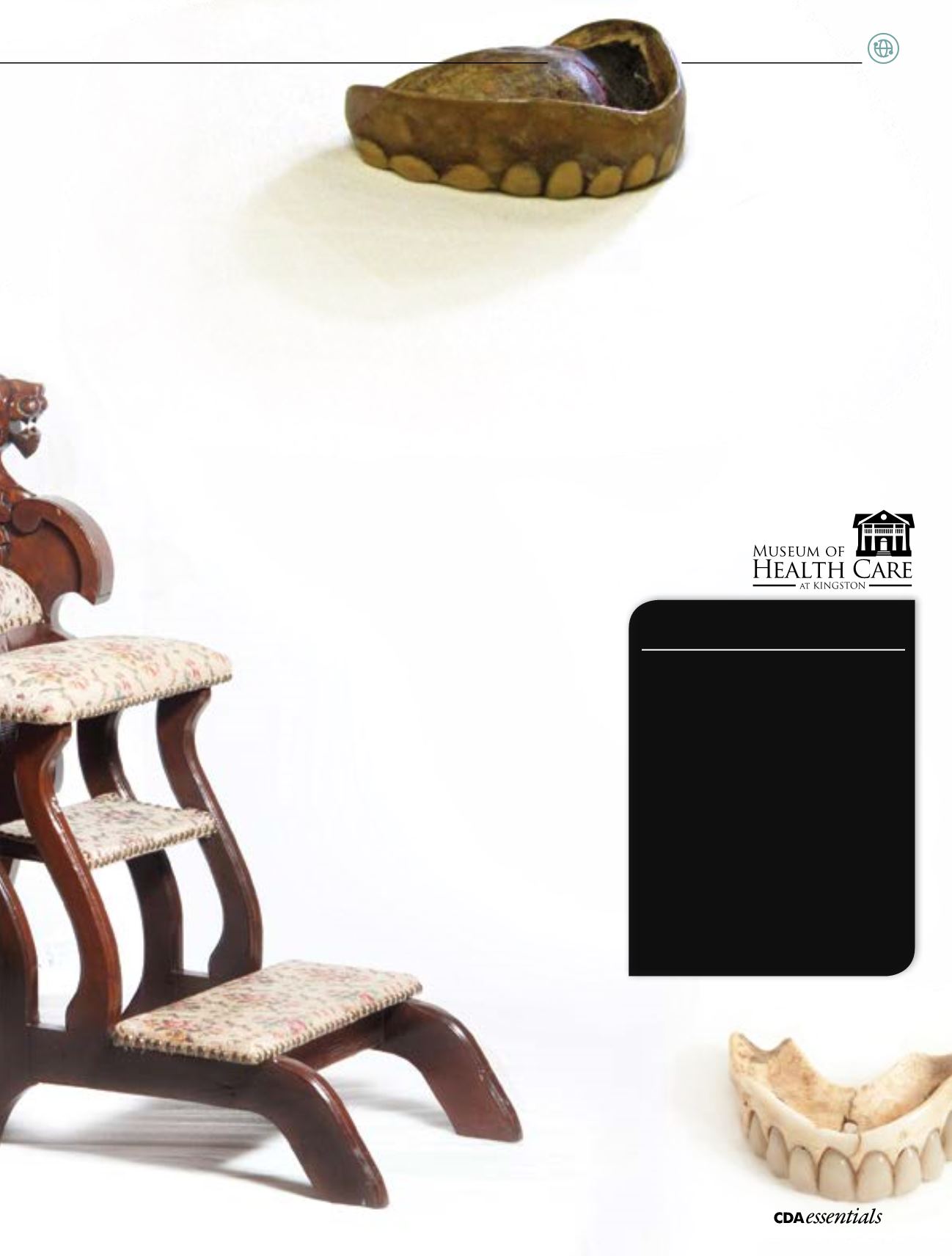

21
Volume 1 Issue 7
|
N
ews and
E
vents
When Dr. Crawford became
JCDA
editor
in 1987, the family moved to Ottawa,
and so did the dental collection. The
assortment found a home at the Dentistry
Canada Fund office, where the executive
director had suggested opening a dental
museum. Upon the museum's closure
in Ottawa, the collection moved to the
Museum of Health Care in Kingston in
2010. “When the opportunity came to
house a dental collection, the people
at the Museum were quite interested,
acquiring every piece that was in
storage,” says Dr. Crawford.
The Museum named its new
acquisition the
Crawford
Dental Collection
, to honour
the couple’s impressive
contribution to the history
of dentistry. As the
Museum
explains,
it is
“the most
comprehensive
cross-section
of dental
technology and
practice in
Canada over
the past
200 years.”
It includes dental chairs, sterilizers,
cabinets, anesthesia units, drills, X-ray
units, manufacturer pamphlets, and
much more. Visitors may be surprised to
even find plaster casts of 1957–63 Prime
Minister John Diefenbaker!
“We’re particularly proud of our collection
of ivory dentures,” says Dr. Crawford.
“They’re about 200 years old and
carved out of solid walrus and elephant
tusks. How they were created and how
people wore them is still a mystery.”
Ivory dentures could be one of the first
attempts in cosmetic dentistry. “For the
anterior front teeth, instead of having
ivory, human teeth were embedded
and riveted for cosmetic reasons,”
Dr. Crawford explains.
Probably the most unusual dentures
in the collection are homemade. As
reported by the Kamloops Sentinel in
1968, hunter Francis Wharton of Little
Fort, British Columbia, used deer teeth to
create dentures for himself. For the palate,
he molded plastic wood around the roof
of his mouth, and he fitted the teeth
he previously filled and grinded using
household cement.
Another favourite of Dr. Crawford is a
“finger-powered drill” from 1846 that had
to be turned by hand. “I figured it did
about 75 revolutions per minute.”
With his collection and the
Teeth in Time
exhibition, Dr. Crawford hopes his peers
can acquire the same kind of pride he
feels about being a dentist. “I’m very
proud of the progress of dentistry and
of its contribution to people’s health,”
he says. The collection mirrors the
evolution of our profession. “We were
here. We struggled. We innovated. We’re
only where we are today because past
dentists made amazing contributions to
the profession, with a mind to bringing
optimal oral health to the patients to
whom they were dedicated.”
a
Upper denture from the
early 1800s. The anterior
teeth are human, and
posterior teeth, ivory.
Upper denture created by hunter
Francis Wharton in 1968 using
deer teeth, plastic wood, and
household cement.
Support the museum
To help keep our dental history alive,
the Museum of Health Care needs your
support. Dr. David Tessier is a Kingston
dentist who serves on the Museum’s Board.
He says the Museum always welcomes
potential donations to its collection and
is currently searching for articles from the
mobile dental units used in World War I,
to commemorate the upcoming 100th
anniversary of the Royal Canadian Dental
Corps in May 2015.
Donations can also take the form of
commemorative gifts, endowment funds,
bequests, annuities or recurring contribu-
tions. See
museumofhealthcare.ca/get-involved/donors.html
for details.


















